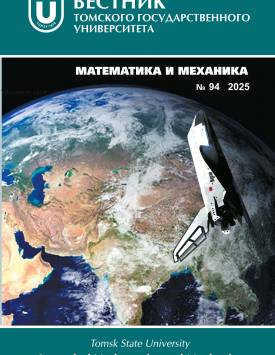The use of the principle of least action in a study of ideal gas flow in subsonic parts of a nozzle
The principle of least action is formulated for a steady flow of an inviscid non-heat conducting ideal gas in an axisymmetric channel of variable cross section. The problem on the minimum of action for a steady flow is reduced to a variational problem on the minimum of the Lagrangian in an arbitrary cross section at a given flow rate. Using the obtained optimality condition, a marching method is constructed to derive the flow parameters and channel shape both downstream and upstream relative to a conditional initial section referred to as the "inlet" section, where the flow parameters and gas flow rate in the channel are preliminarily determined by specifying the slope of the streamlines. After this, the structure of the optimal (in accordance with the principle of least action) channel contour is numerically studied.
Keywords
ideal gas, principle of least action, variational problem, optimality condition (Euler equation), boundary extreme value, energy conservation lawAuthors
| Name | Organization | |
| Afonin Gennadiy I. | Tomsk State University | agi@niipmm.tsu.ru |
| Afonin Anton G. | Tomsk State University | aag@niipmm.tsu.ru |
References

The use of the principle of least action in a study of ideal gas flow in subsonic parts of a nozzle | Vestnik Tomskogo gosudarstvennogo universiteta. Matematika i mekhanika – Tomsk State University Journal of Mathematics and Mechanics. 2025. № 94. DOI: 10.17223/19988621/94/7
